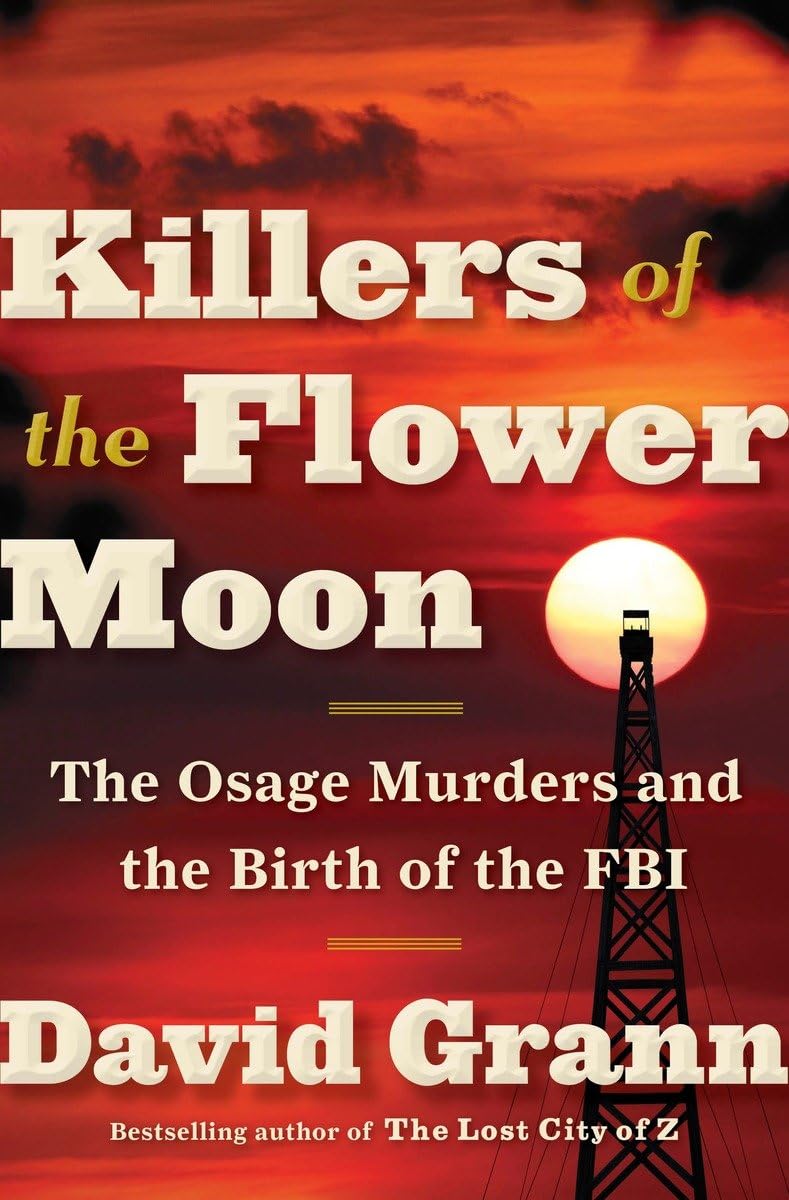As the oil boom surged, some of the most powerful figures in the industry arrived to stake their claim in the Osage oil fields. Among them were E.W. Marland, Bill Skelly, and Harry Sinclair, men who had already amassed great fortunes and sought to expand their empires through the strategic acquisition of drilling rights. At the helm of the high-stakes bidding wars was Colonel Ellsworth E. Walters, a seasoned auctioneer whose commanding presence turned each event into a theatrical spectacle, coaxing the oil barons into raising their bids ever higher. Under his expert showmanship, the price of leases skyrocketed, with some single parcels of Osage land fetching over a million dollars, cementing the Osage people’s status as some of the wealthiest landowners in the world.
While these bidding wars created instant millionaires, the chapter does not shy away from exploring the hidden dangers that accompanied this immense wealth. As money flooded into the Osage Nation, white Americans—many of whom viewed Native Americans as unfit to manage wealth—began plotting ways to control these fortunes. This led to the establishment of the government-mandated guardianship system, which assigned white “guardians” to oversee the financial affairs of full-blood Osage individuals, effectively stripping them of direct access to their own money. While justified as a measure to prevent financial mismanagement, this system became a tool of systemic fraud, theft, and exploitation, allowing corrupt guardians to embezzle millions from their Osage wards under the guise of financial oversight.
The vast wealth of the Osage also exposed deep societal fractures, highlighting the stark contrast between prosperity and racial inequality in early 20th-century America. While some Osage families indulged in lavish lifestyles—purchasing luxury automobiles, European fashion, and sprawling estates—many were unfairly ridiculed as reckless spenders. Meanwhile, white oilmen and business elites, who openly coveted the Osage wealth, justified their own excesses as the product of hard work and ingenuity, perpetuating a double standard that ignored the Osage’s rightful ownership of their oil-rich lands. Even within their own communities, Osage citizens were subject to financial restrictions, requiring government approval for basic purchases—a demeaning process that reinforced their second-class status in a system that had been designed to protect white financial interests above all else.
Beyond the immediate economic impact, the chapter delves into the cultural and societal transformation of Pawhuska, a town that evolved from a modest prairie settlement into a thriving commercial hub seemingly overnight. The oil wealth fueled a construction boom, leading to the rise of opulent mansions, banks, luxury hotels, and high-end shops, turning Pawhuska into a destination for investors, politicians, and opportunists. Yet, beneath the glitz and glamour, resentment simmered, as many white residents resented the Osage for their sudden prosperity, believing that wealth should be earned through labor rather than inherited through land rights. This undercurrent of jealousy and greed laid the foundation for a sinister wave of violence, deception, and betrayal that would soon engulf the Osage people.
The Million Dollar Elm auctions, though symbolic of Osage prosperity, also foreshadowed the tragic events to come, as powerful white businessmen, corrupt officials, and even local law enforcement conspired to systematically strip the Osage of their wealth through fraud, coercion, and murder. What should have been a golden era of opportunity and growth for the Osage instead became a period of unimaginable loss, as a hidden war was waged over oil money, inheritance rights, and the control of Osage fortunes. The chapter masterfully juxtaposes the dazzling highs of newfound wealth with the dark undercurrents of exploitation and racism, illustrating how prosperity can become a curse when greed and corruption run unchecked.
Through vivid depictions of the high-stakes auctions, the extravagant spending, and the growing tensions, the chapter paints a nuanced portrait of an era where ambition, excess, and injustice collided. The wealth of the Osage Nation, instead of guaranteeing security, made them targets for some of the most ruthless crimes in American history, crimes that would take years to fully uncover and decades to even begin to rectify. Under the shade of the Million Dollar Elm, history was made—but for the Osage people, it came at a devastating cost that would haunt generations to come.


